#the 2015 slippers are better but the butterfly is a little much
Text
i have ONE complaint about the 1997 cinderella and it's that this is the UGLIEST glass slipper i have ever seen

this is a PLASTIC CLOG i can FEEL my girl getting sweaty in this thing i HATE IT
#like WHAT am i LOOKING AT!!!#the 2015 slippers are better but the butterfly is a little much#anyway i haven't watched this movie in forever and it still goes hard
1K notes
·
View notes
Text
🦋 How I Met Your Mother Is A Fairytale: A Cinderella Story 🦋
How I Met Your Mother really is a fairytale. Think about it. Fairytales rely heavily on symbolism: the red apple in Snow White, the glass slipper in Cinderella, the rose in Beauty and the Beast. HIMYM, like fairytales, relies heavily on symbolism. It’s one of the things I love most about How I Met Your Mother.
You’ve heard of the most common symbols in HIMYM: the yellow umbrella, the blue french horn, the red cowboy boots, and the pineapple. But there are other important symbols in HIMYM that are overlooked, namely the butterfly, the pumpkin, the locket and the lighthouse.
Remember, fairytales are about hope and transformation.
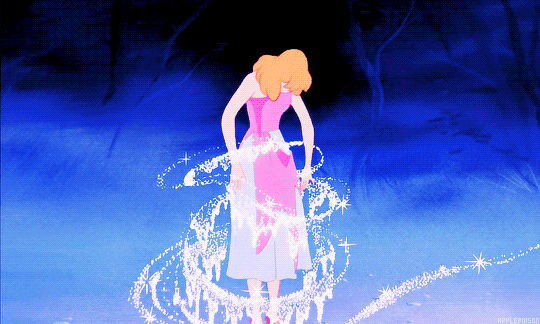
The yellow umbrella symbolizes hope. It’s like the wishing star in Disney. Ted had to believe in fate, believe that he would one day meet his soulmate.
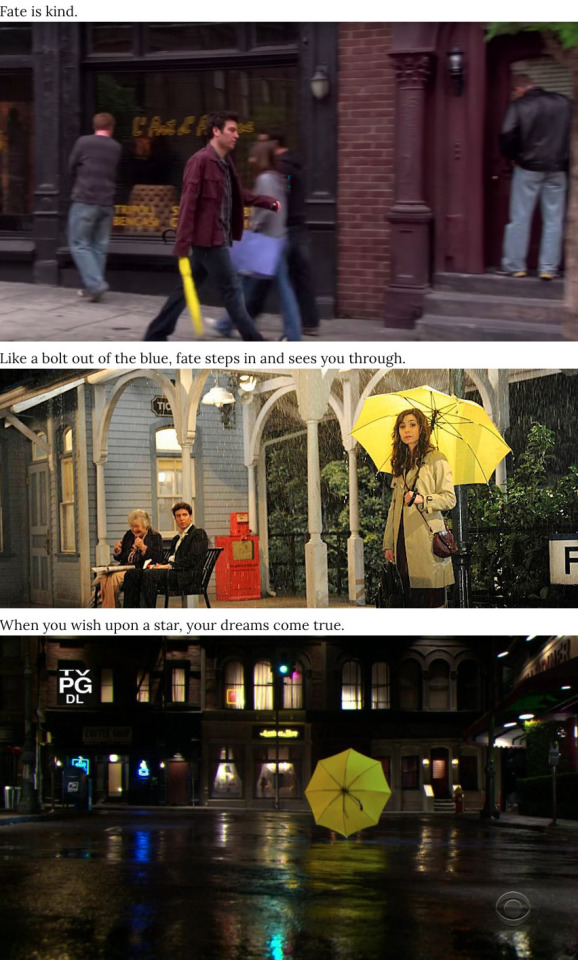
You may laugh now but I’m going to show you how How I Met Your Mother is a Cinderella story, starting with the symbols, the butterfly and the pumpkin.
Butterflies represent transformation.
The main animals represented in Cinderella are the butterfly/bird and the fish. In the Cinderella movie Ever After, the main girl Danielle starts out as a fish. As a servant, she feels unfit to be among royalty.
Danielle: A bird may love a fish, signore, but where will they live?
Da Vinci: Then I shall have to make you wings.
Danielle looks at her dirty hands, then decides to cleanse herself and go for a swim, alluding to her being a fish at the beginning of the story.
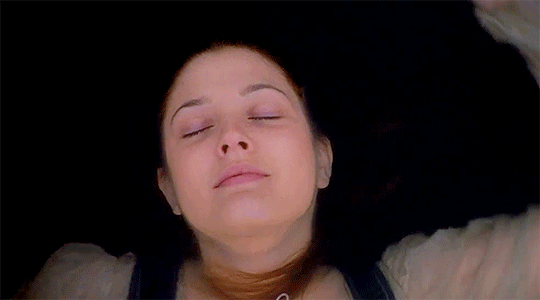
Ever After alluding to her future transformation with wings.
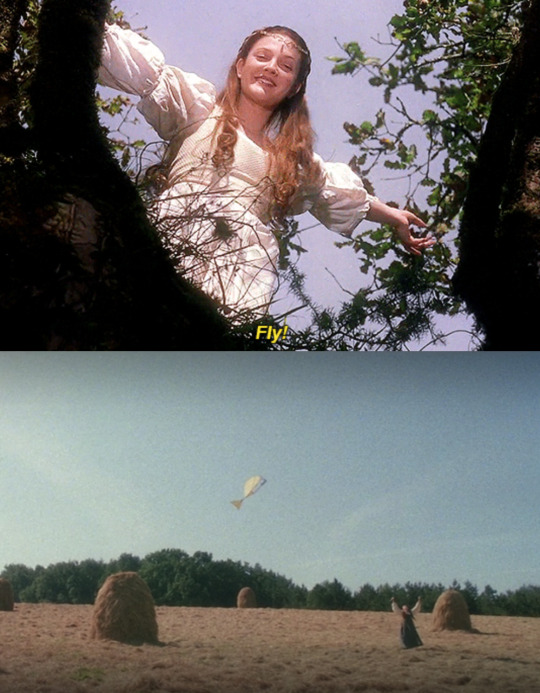
Her dress has wings.
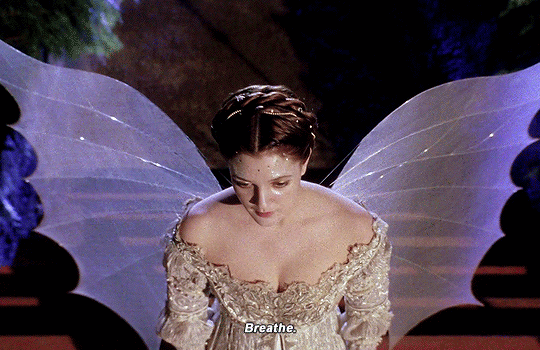
Butterfly dress in Cinderella 2015

The butterfly is also used to signify transformation in How I Met Your Mother.
After Ted broke up with Robin, he got a butterfly tattoo, which became a running joke for the rest of the series.
“I thought you needed a wingman to fly, but the truth is, you’ve got your own wings now. Since you and Robin split, you’ve been gestating. Growing in your cocoon. And last night, you burst out of that cocoon like a majestic, uh…gosh what is it that comes out of a cocoon? I was always bad at science.” — Barney to Ted
Every time a female character undergoes transformation or a major life transition, she’s wearing a butterfly necklace.
Robin wearing the butterfly necklace when she quits her job in search for a better one. “I came to Metro News 1 as a little caterpillar, and for four years, this desk has been my cocoon. But tonight I emerge an ambitious butterfly.”
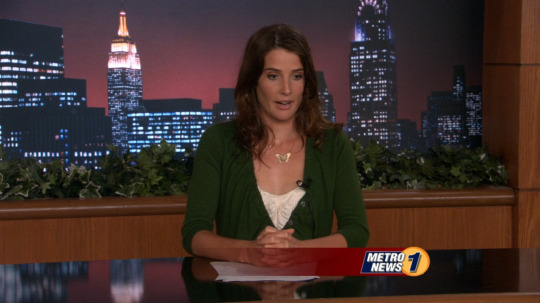
When Lily returns from San Francisco after her break up with Marshall, she’s wearing the butterfly necklace.
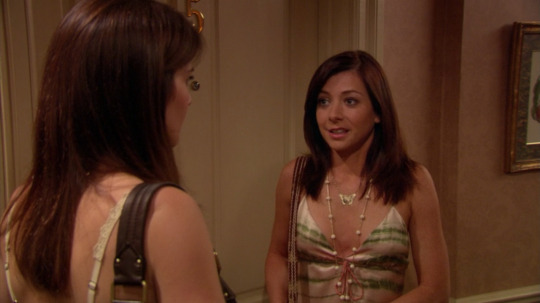
And that, kids, is the main theme of How I Met Your Mother.
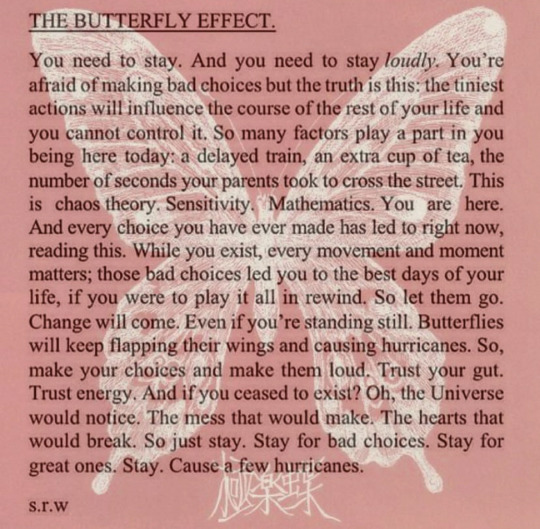
“Kids, I’ve been telling you the story of how I met your mother. And while there’s many things to learn from this story, this may be the biggest. The greatest moments of your life won’t necessarily be the things you do. They’ll also be the things that happen to you. Now I’m not saying you can’t take action to affect the outcome of your life. You have to take action, and you will. But never forget, that on any day, you could step out the front door and your whole life can change forever. You see, the universe has a plan, kids, and that plan is always in motion. A butterfly flaps its wings, and it starts to rain.”
Hmm, I wonder what happens when it starts to rain? It’s like Ted took out his yellow umbrella in that very scene! Isn’t HIMYM brilliant!?
Like Cinderella, Ted had to learn that “even miracles take a little time.”
Think about it: why is it called wingman? Barney gave Ted wings to fly.
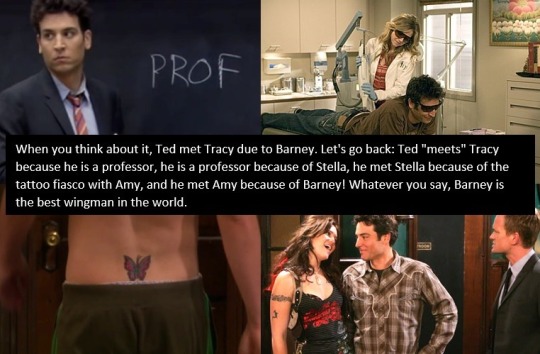
Given how much fairytales and HIMYM have in common, it’s only fitting that HIMYM is now on Disney+!
Pumpkin
The pumpkin is an icon in Cinderella.
Likewise, the pumpkin is also a significant symbol in HIMYM, enough for it to have a repeat episode near the end of the series.
Each year, Ted returns to the same Halloween party in hopes of finding the girl in the pumpkin costume he met years earlier. We don’t who the girl is and like Prince Charming, Ted doesn’t have her identity. He never got her name or number. She’s a mystery to us.
The pumpkin is a testament to Ted’s faith. “It’s about believing. This girl represents something to me. Hope.”
Robin: How do you do this, Ted? How do you sit out here all night on the roof in the cold, and still have faith your pumpkin’s going to show up?
Cinderella had to wait for her pumpkin too.

“If you’d lost all your faith, I couldn’t be here. And here I am.”
In HIMYM, the minor characters are shorthand parallels for the major characters. For example in “The Window” episode, it’s not the Girl Next Door whom Ted’s been in love with his whole life. It doesn’t matter who she is. The Girl Next Door isn’t real. She’s just a representation of who Robin is.
Tracy = Slutty Pumpkin
Victoria = Natalie (the one Ted dumped on her birthday)
Robin = Girl Next Door (Maggie)
The Slutty Pumpkin is shorthand for the mother. She’s a mystery, the one Ted waited so long to meet, his search for “the one.”
Natalie is a shorthand for Victoria. Ted almost marries her. There’s nothing wrong with her, she’s great, but she simply isn’t “the one.”
Then there’s the Girl Next Door, a representation of Robin. He knows that she’s the love of his life, but the timing never worked out for them.
#how i met your mother#himym#fairytale#cinderella#disney#ever after#neil patrick harris#cobie smulders#ted mosby#barney stinson#robin sherbatsky#lily aldrin#marshall eriksen#manifestation#fan theory#analysis#jennifer morrison#mine
49 notes
·
View notes
Note
Will you tell us some of your many Thoughts™ about the live action Cinderella?
so something to keep in mind is that I went back to work monday night, my sleep schedule is heckedddddd and I am so tired right now I’m basically drunk
I am literally eating cereal in bed and it’s a real concern that I’m gonna fall asleep and drown in this bowl so this is gonna have to be the. oh christ whatsit called. the shit with the twitter memes, oversimplified takes on classic literature, cheat guide version, I am so tired
but ok here we go:
cinderella is my favorite fairytale, basically. ever after was a MAJOR formative influence on me, and it came on the heels of the ‘97 abc cinderella with brandy AND ella enchanted, which were also major formative influences, probably because they came into my life at a time when I really, really needed escapist media
I’ve read a ton of different spins and adaptations, I wrote a frickin’ cinderella novel that thankfully didn’t get anywhere with literary agents, and I watched every movie version I could get my hands on, so my expectations were not high ok
if you like the 2015 cinderella you need to scroll away right now because I’mma ruin it with petty. in kinda-sorta order, (not having seen this movie in a longish while) this is the petty shit that bothers me:
ella wants her father to bring home the first branch that hits his hat on the way home or whatev, and he does, which’d be a decent homage to perrault’s fairytale but they don’t fucking revisit it, no magic tree mother gifts here so why bring up chekhov’s tree branch, ugh
none of the characters are from the same genre, you expect me to believe chilly regal cate blanchett raised those dipshits, my disbelief is unsuspended
actually also any of the side characters with their one-off lines are more interesting and entertaining than any of the mains
richard madden looks like sebastian stans’s much older, significantly less attractive brother and he also looks a solid decade older than lily james, which is unfortch for him b/c I’m p sure he’s closer to her age than sebstan’s
I hate the cgi stag, having horrible flashbacks to kstew’s snow white movie, and the multiple jarring genre shifts therein, can we find a different shorthand for goodness of character rather than brief spiritual connection with cgi wildlife pls I’m begging you
I don’t like the big fairytale dress, I know this is a movie for children but I dislike the cheap-ass-looking butterflies and I miss the color from the animated original, and all this completely ignoring how the production treated lily james re: said dress
while we’re here what is upppp with the stepsisters’ ballroom gowns, they don’t match the mcfrickin aesthetic of the rest of the movie, it’s like they pulled those gaudy ridic costumes out of storage from the ‘97 cinderella, I demand visual continuity but nope, we can’t have that can we
I know you’re trying to pad the plot without too obviously cribbing from the slipper and the rose but evil-because-politics duke stellan skarsgard really doesn’t do it for me 'cause they drop that thread entirely. yaaaaaaay you married for love, too bad you offended your neighbors rejecting all their princesses, they’re ready to invade now
this entire relationship is built on lyinggggg. kit misleads the “good honest country girl” presumably so as not to intimidate her and she shows up at the ball and she’s fine letting him think she’s a princess, he makes that assumption and there’s a perfectly fine opportunity to correct it AND SHE DOESN’T. “NO MORE SURPRISES” ELLA? ARE YA SURE ABOUT THAT? how did either of them think that course of action was going to work out, honestly, the screenwriters dropped the ball, there could have been slightly more narrative complexity for very little effort, yes this is a movie for children but THEY ARE BEING NEITHER COURAGEOUS NOR KIND WITH THIS, ABC DID A WAAAAAAAY BETTER JOB 20+ YEARS AGO
and okay, here’s the big problem for me, here is what I loathe most, because THIS IS SUPPOSED TO BE A MOVIE FOR CHILDREN:
because of the dialogue, the sound mixing and the probably-directorial-decision to make lily james as breathy-sounding-as-possible, an uncomfortable chunk of the dialogue sounds like it came from a porno
I’m not fucking kidding
she walks into the ball and I was already perturbed because you can hear her gasping and the actual goddamn dress swishing while they’re dancing
but that entire bit in the garden? put that shit on and close your eyes and it is uncomfortable as hell to listen to
I was writhing in discomfort in the theater with friends, and multiple people in the audience were awkward-laughing because it was a later evening showing so most everyone there was an adult and I feel like a lot of us were on the same page
it might be a minor thing to some people but it completely counters anything good about the movie for me I HATE IT
10 notes
·
View notes
Text
Anatomy of a pointe shoe
Here are photos of Lara’s pointe shoes. Click on the photos for a larger image.
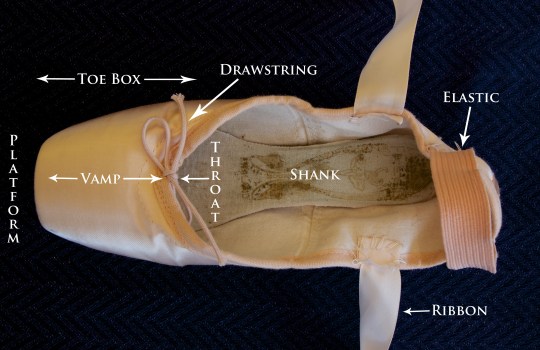
Toe Box: the cup that encompasses the toes and ball of the foot
Elastic: secures the shoe to the dancer’s foot
Platform: the bottom of the toe box on which the dancer stands
Ribbons: long satin type material that keeps the shoe more secure on the dancer’s foot
Shank: the stiff insole that provides support under the arch
Throat: the opening of the shoe
Vamp: the section of the shoe that covers the top of the toes and foot
What are pointe shoes made of?

In traditional shoes, the toe box is made from tightly packed layers of paper, cardboard, burlap, and/or fabric held together by glue. The material is compressed into an enclosure (toe box) that surrounds the dancers’ toes so that her weight rests on the platform. The shank is generally made of cardboard, leather, or a combination. The outer material is a soft cloth called corset satin. The materials and methods of construction have not changed much in the last 100 years.
Gaynor Minden shoes are different from the rest. Gaynor Minden shoes have elastomerics (material that is able to resume its original shape when a deforming force is removed) for its shanks and boxes rather than the traditional materials of cardboard and paper, held together by glue.
What are the major pointe shoe brands?
Why do dancers wear a particular brand? In some ballet companies, the preponderance of dancers wear a particular brand. Most NYCB and Miami City Ballet dancers wear Freed of London while dancers at the Australian Ballet wear Bloch shoes. At other companies like ABT, dancer preferences span the list of companies below. At companies without affiliations with shoe companies, dancers probably select shoes based on dancer recommendations, leading dancer endorsements in advertising, and trial and error in an effort to find the perfect shoe.
Bloch
Bloch is an Australian company founded in 1932 by Jacob Bloch, a shoemaker who immigrated to Australia from Eastern Europe in 1931. Jacob loved music and dance; noticing a young girl struggling to stay en pointe, he promised he would make her a better pair of pointe shoes. He started making shoes in 1932 in Paddington, Sydney and his reputation for high-quality shoes grew as many ballet companies toured Australia during the 1930s, particularly Russian companies. Today, Bloch is headquartered in Sydney, Australia, with a European office in London.
Capezio
Salvatore Capezio opened his shop near the old Metropolitan Opera House in New York City in 1887. He was only 17 years of age and his original business was to repair theatrical shoes for the Metropolitan Opera. In the late 1890s, he turned his attention to making pointe shoes. His reputation grew; Anna Pavlova purchased pointe shoes for herself and her entire company in 1910, helping Salvatore’s business. His success spread and by the 1930s, his shoes were used in many Broadway musicals and in the Ziegfeld Follies.
Freed of London
Frederick Freed founded the company in 1929; before starting his company, Freed and his wife made ballet shoes at Gamba. After starting Freed, they worked from a basement in the Covent Garden section in London, the same site where the brand’s flagship store now stands. Today, Freed of London is a sister company of Japanese Dancewear company Chacott; both companies are owned by Japanese apparel company Onward Holdings. Freed of London sells in over 50 international markets through direct business partners and distributors.
Gaynor Minden
Eliza and John Minden opened their first store in the Chelsea section of Manhattan in 1993. Eliza is the Head of Design at Gaynor Minden having spent nearly a decade of researching and developing a prototype shoe, testing hundreds of prototypes. A former avid amateur dancer, she had witnessed the introduction of high-tech materials into athletic equipment and believed that pointe shoes could also be improved with the use of modern materials. Gaynor Minden uses elastomerics for its shanks and boxes rather than paste and cardboard used in traditional shoes.
Grishko
Nikolay Grishko, a businessman with a passion for ballet, founded Grishko in 1988, shortly after President Mikhail Gorbachev fostered the development of private enterprise in the USSR. At the time, Russian hand-made pointe shoes were not generally available to dancers outside of Russia. Nikolay capitalized on the demand for Russian shoes to create a global business in the manufacture and distribution of pointe shoes and other ballet gear. In 1989, the company introduced Grishko shoes to the U.S. ballet market.
Sansha
Franck Raoul-Duval, a 25-year-old Frenchman with a passion for dance and Russian history, founded Sanscha in 1982. He developed a new type of ballet shoe, the split-sole ballet slipper, with a glove-like fit. Sansha now manufactures a range of dance shoes from ballet, jazz, hip-hop to flamenco, and ballroom to tap.
Who wears what?
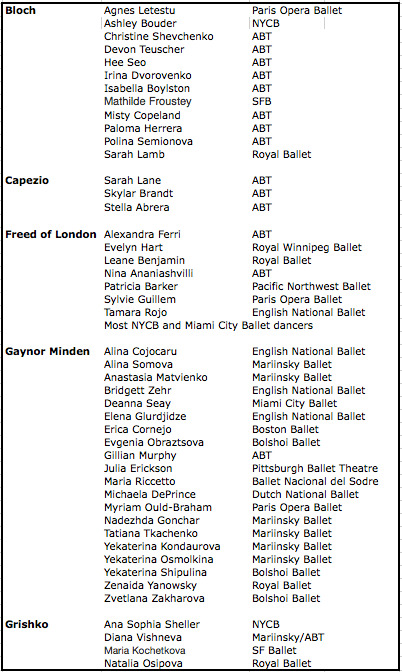
How much do pointe shoes cost?
The retail cost of pointe shoes is presented in the table below as of early 2015. The price does not include the cost of ribbons, which are approximately $5.
Brand Types Lowest Highest
Bloch 21 $65 $80
Capezio 14 $52 $84
Freed 16 $78 $104
Gaynor Minden (GM) 1 $95 $95
GM Special Order 1 $110 $110
Grishko 10 $76 $81
How long do pointe shoes last?
The Grishko website estimates that the average life span of a pair of shoes is 4-12 hours of work, depending on the type of classes and the level of pointe work. Griskho recommends changing shoes after 45-60 minutes of work (30 minutes for dancers that perspire heavily) and letting them dry out for a minimum of 24 hours before using again.
On the other hand, Gaynor Minden shoes made of modern materials last on average about five times longer than traditional brands according to Cunningham et al. in The American Journal of Sports Medicine.
How many pointe shoes do ballet companies use in a year and at what cost?
Given that traditional shoes last between 4-12 hours, major ballet companies go through a lot of shoes. Pointe shoe expenses are a major cost of ballet companies and many companies have dedicated pointe shoe fundraising drives; much of the information below is from these appeals.
• ABT spends $500,000 a year on pointe shoes. I use an estimate of $70 per pair for ABT’s cost (ballet companies pay less than retail cost), which leads to 7,100 pairs of shoes a year split among approximately 45 female dancers. That’s about 160 shoes per dancer every year.
• NYCB spends $600,000 a year on pointe shoes. An estimate of $70 per pair leads to 8,600 shoes a year. With approximately 50 female dancers, that comes to about 170 pairs per dancer a year.
• The Royal Ballet: “Every year The Royal Ballet uses 12,000 pairs of shoes at a cost of 250,000 pounds,” (about $400,000). However, the 12,000 pairs of shoes probably includes men’s shoes and slippers. An estimate from The Guardian puts the total number of pointe shoes used at The Royal Ballet at 6,000-7,000 pairs a year.
• English National Ballet: English National Ballet uses 5,000 pointe shoes a year (information from video).
• The Australian Ballet: “Over 5,000 pairs of pointe shoes are used at a cost of more than $250,000. The Australian Ballet issues each female dancer with pointe shoes: corps de ballet and coryphée members receive two pairs per week, soloists and senior artists receive three pairs, and principal ballerinas receive six pairs. All of these shoes are hand-made to each dancer’s individual specifications.”
• The Birmingham Royal Ballet goes through “…over 4,000 pairs a year.”
• The Miami City Ballet uses 3,000 pairs of shoes a year.
Marianela Nuñez of The Royal Ballet discusses her pointe shoe use in The Telegraph: “During the day I can get through two pairs of shoes in rehearsals; if I’m dancing in a three-hour ballet, I use one pair per act, so three pairs can go in one night.” She wears Freeds.
Emily at NYCB explains that the number of shoes she uses in a season depends on what she is dancing. “The number of shoes I go through depends on the rep for that season. For instance, during Nutcracker I go through at least 2 pairs every day. Therefore in six weeks that’s at least 72 pairs! During our regular Winter and Spring seasons the count really varies because I may be rehearsing all day and performing all night or I may have the entire day off.”
Most major companies have a shoe master or manager to manage the process of recording dancer specifications, ordering the shoes, and coloring the shoes if necessary. The Birmingham Royal Ballet has a nice profile of its shoe master with a summary of his responsibilities.
Do professional dancers wear custom made shoes?
Most professional dancers wear custom or special order shoes. Freed offers special order shoes in which the dancer can specify the shoemaker, length, width, type of block, custom vamp, insole type, among other items. The Freed website has a list of shoemakers-all that have photos are men-with letters and nicknames (such as Butterfly Maker, Club Maker), number of years making pointe shoes, and personal interests.
Like most dancers at NYCB and Miami City Ballet, Emily, Lara, and Rebecca wear custom made Freed shoes and a common theme among the comments below is the great benefits of wearing custom shoes.
Emily: My shoes are custom made and I feel so lucky that we can do that here! My shoes are Freed Classics with the Bell maker. I don’t do many crazy customizations besides a little extra glue in the box and a little less satin on the sides so I don’t get any bunching on the sides of my feet.
Lara: I’ve worn shoes from many makers at Freed. I used to wear from another maker, but now I wear shoes from Fish and Crown makers.
Rebecca: At Miami City Ballet we all wear custom shoes. Our shoes can make or break our dancing (as hard as that may be to believe). If you have too much material on the top of your foot, you won’t be able to get all the way en pointe. If the bottom sole of the shoe is too soft, you will go too far over when you are en pointe. If the tip of the shoe is too soft, your shoes won’t last more than an hour. These are the sorts of things that are determined by each dancers’ individual foot. So the ability to have shoes customized really is invaluable to us.
I have worn Freed of London since I was a student. When I started dancing with Miami City Ballet as a student in the school, I was delighted to find that they provided me with shoes for performances. The first time I was presented with shoes from the company felt like Christmas to me. The shoe master offered me shoes that were in my size: special order Freed shoes that one of the principal dancers in the company could no longer wear. I was amazed by the world of shoe customization! It seemed as if my options were limitless. They are in fact so limitless that eight years later I find myself continuing to chase the mythical “perfect” shoe.
Pointe shoe brands have different representatives who travel around the country helping dancers find their perfect shoe. I wouldn’t say that they try to convince dancers to switch but if the dancer is interested, they help them with their customization and other issues.
Here is a video from Rebecca’s website on how Marie fits shoes for dancers:
youtube
Are all custom made shoes the same?
You might think that all custom made shoes are the same, but they are not, with slight differences across makers that only a dancer can detect. Interestingly, shoes that are made by the same maker can vary from shoe to shoe. That was what Rebecca, Ashley Bouder, and Emily are referring to when they say that some shoes are “good” and “bad.”
Rebecca: I wear custom made Freed shoes, and sometimes a shipment of shoes will come in a little different than a pervious one. Amazingly these small inconsistencies make a big difference.
Emily: Since all Freed Classics are handmade, there are definitely going to be variations. Usually you can tell before you put them on if they are going to be good or bad shoes. But most of the time you can make a shoe work for something even if it is a little weird!
Ashley Bouder, NYCB, in an interview with Pointe Magazine: Because they are handmade, Bouder’s shoes aren’t all identical. Some pairs arrive looking as if they won’t work well at all. “I pick out the good pairs and wear those first, but I end up wearing all of them anyway,” she says. “You can fix anything on a shoe. If there’s a lump on top you just take a hammer, flatten it and glue it. You only have to wear them once.”
How do dancers break in their pointe shoes?
youtube
Emily: I break in all of my shoes the same way no matter if they will be used for a show or just rehearsal. I don’t do anything too crazy though: just a little glue in the tip, bend the top of my shank and take the nail out of the heel so it doesn’t stab me!
Rebecca: I usually save good shoes for performances. I find that I will try to wear my least favorite shoes for rehearsals and classes. I generally prefer shoes that are brand new, so to prepare them for a show, I usually will just wear them for one class. I have even been known to put brand new shoes on right before going on stage. Again this is all preference, and everyone is different.
Lara: I don’t use special shoes for performance. I always break in my shoes the same way-I step on the box to flatten it a little and then bend the shank. I used to take the nail out from the shank and split it apart from the bottom, but now I custom the shoe to not have a nail. Then for a show, I bang my shoes on the wall to make sure they’re not loud.
Ashley Bouder in Pointe Magazine:
Before wearing new shoes, Bouder steps on the box and works it with her hands, and bends the shank back and forth. She also reinforces the tips with glue inside the box. “I have a very specific place where I put in little bits of glue,” she says. “It makes all the difference in the world for me—it’s the difference between being able to turn and not being able to turn.”
The amount of glue varies for particular performances. “If I know I’ll be turning a lot on the same foot, such as doing 32 fouettés, I’ll put extra glue in that shoe,” she says. “Or for Rose Adagio I’ll put extra glue in the right shoe because I’ve got eight balances on that foot. If I’m doing something soft and pretty, I still add glue, but I don’t put extra glue and I make sure I bang them so that there’s no noise.”
She breaks in a new pair during class then puts them away for that evening’s performance. For rehearsal, she wears the shoes from the night before. Though she’s not sure how many pairs she wears in a season, Bouder typically uses one pair per performance, but if she’s dancing a full-length ballet such as Swan Lake, she’ll use at least two pairs in one night.
Do dancers wear more than one pair of shoes in a performance?
See those nice shiny pointe shoes a dancer is wearing at the beginning of a performance? Chances are the dancer will not be wearing the same pair at the end of the performance.
Rebecca: This really depends on what the evening entails. I find that for some ballets I need brand new shoes, while for others, I prefer ones that are a bit softer. I usually determine this based on the choreography: if there is a lot of pointe work or turns, I find that I need a very solid shoe, while something that involves more jumps call for softer shoes. So I often find myself changing shoes more out of preference than necessity.
Lara: Depending on the programs that night, I can use more than one pair. Sometimes I’ll wear a new pair for one program (like Serenade) and then sometimes an older pair that’s been worn a few times (like Princesses in Firebird).
Emily: My routine usually is to wear a different pair for each ballet I am performing that night. That way my shoes are never soggy or too dead by the time I get to the last ballet. This is very important since by 9:45 pm you’re pretty tired and may need a bit more support for the final ballet of the day.
Marianela Nuñez: As quoted in The Telegraph, Marianela uses one pair per act. In a full-length ballet such as Don Quixote, she goes through three pairs.
When do dancers discard a pair of shoes?
Lara: I discard a pair of shoes when the boxes are uneven because it’s dangerous to dance on; at that point, it’s too soft to give me adequate support. I think it’s very important for our longevity to have shoes that provide enough support.
Emily: This is definitely different for each dancer. For me, I usually need to discard my shoes once the right shank has died. That will always die first for me because my right foot is a little bit more flexible than my left!
Rebecca: Usually my shoes die first in the box.
When do dancers wear their pointe shoes in ballet class?
A dancer starts their day with ballet class. A ballet class generally lasts 90 minutes with the first part consisting of barre exercises and the second part center work consisting of adagio, petite and grande allegro. Some women wear their pointe shoes throughout ballet class while other wear slippers, which are made of leather or canvas, similar to what men wear. Practices among women differ as Emily, Lara, and Rebecca explain.
Rebecca: I wear pointe shoes for the entirety of class, every day. I used to wear flat shoes for barre and put my pointe shoes on for center, which is quite common. I would find that it would take my feet awhile to become warmed up enough to dance in the center, so I began putting my shoes on as soon as I step in the studio in the morning. This has been very beneficial to my pointe work and the strength in my feet and ankles.
Emily: Up until very recently, I would always wear my pointe shoes from the first plie of the day until the day was done. However, after dealing with some tendon issues, I’ve started wearing wool socks or flat shoes for barre. It gives my feet a slower warm up to make sure I don’t overstretch anything. I do prefer wearing pointe shoes at barre though, so I hope to one day get back to that! In the off season, I pretty much have the same routine with my shoes because it’s necessary to keep my feet acclimated to pointe shoes so I don’t get blisters.
Lara: It’s really up to each dancer, but I wear flat shoes for barre and pointe shoes for center. It’s nice to be able to roll through my feet early in morning without pointe shoes to give my body a chance to warm up. When I’m not performing, I usually try to take class to stay in shape and that’s when I’ll wear my shoes. There are some girls who like to wear their pointe shoes around at home to prevent their feet from weakening too much.
Does wearing pointe shoes hurt?
Emily: At this point I am pretty used to wearing pointe shoes for long periods of time. Unless we are doing a ballet like Swan Lake with a lot of bourrees, my toes don’t hurt that much. More than anything, my arches cramp before my toe nails hurt. I can’t say that this is a better pain though! It still is quite uncomfortable.
Lara: Yes, my toes definitely hurt after wearing pointe shoes for long period of time, even after years of dancing and forming callouses. I think it’s only natural because pointe shoes only provide a very small and tight space that puts pressure on my feet in ways that aren’t meant to happen to the body. Although I’m used to the feeling of pointe shoes, I still get aches and bruised toe nails. To limit discomfort, I soak my feet in epsom salts and elevate/ice to reduce swelling. I personally find 2nd Skin to be a miracle worker when my feet hurt.
0 notes